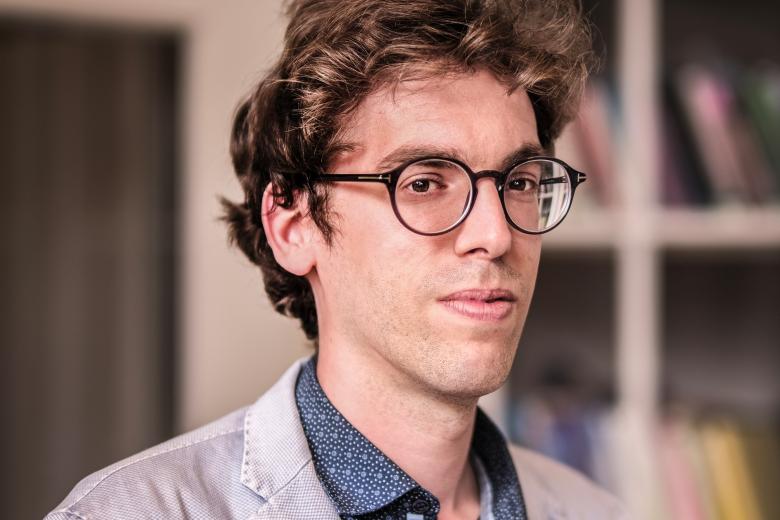Screening Diversity at Tapijnkazerne
An intriguing gallery of portraits dons the facade of the renovated Tapijnkazerne, one of Maastricht University’s key buildings. The photos, including those of UM students, have been printed on the thirty-metre awning at the main entrance, expressing the diversity that the university stands for.
‘Screening diversity’ is the name given to the artwork by Dutch photographer Robin de Puy. Her aim was to “make diversity visible and tangible, not by focussing on differences between people, but rather by celebrating their similarities.”
The photos highlight “aspects of being human that everyone - no matter where you come from - knows. Think of love, fear, focus, adolescence, aging, talent, daring, etc. The students occupy a central place in this story".
The photo gallery was commissioned by the Arts and Heritage Commission (KEC), set up to enhance the work and study environment in UM buildings with works of art. The commission took the renovation of the Tapijnkazerne, and particularly the addition of an extra basement over the entire length of its main building, as an opportunity to display “exciting images showing what UM wants to be: inclusive, innovative, international and firmly grounded in the city of Maastricht".
The Tapijnkazerne, with Robin de Puy's cartoon, was the setting for the Opening Academic Year 2020/21.
Also read
-
UM chair Rianne Letschert nominated as informateur
Rianne Letschert, chair of the UM Executive Board, has been nominated as informateur by the political party D66.
-
Ronald Janse appointed as new dean of Maastricht University Faculty of Law
The Executive Board of Maastricht University is delighted to announce the appointment of Prof. Ronald Janse as dean of the Faculty of Law.
-
Massimiliano Simons awarded funding for innovative art–science project on hybrid plants
"Entangled Genes: Sharpening the Public Debate on Hybrid Plants” is a new artistic research project that aims to deepen societal reflection on genetically modified plants.